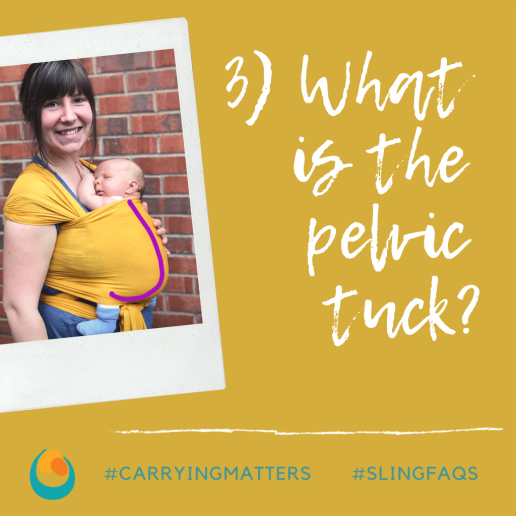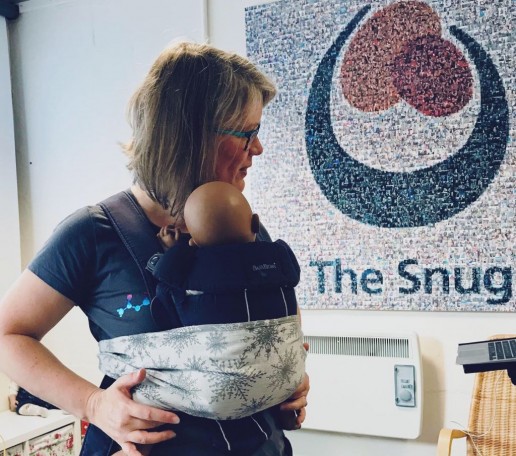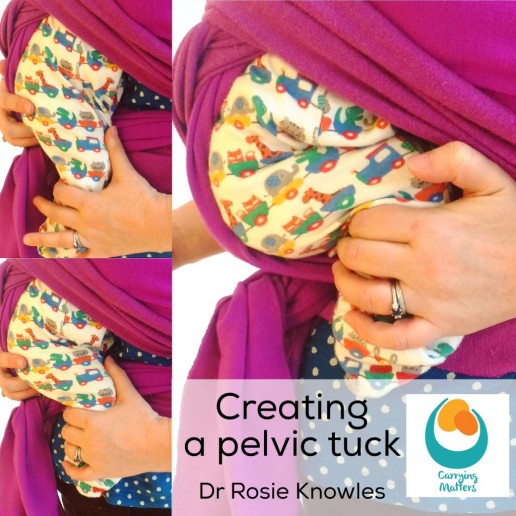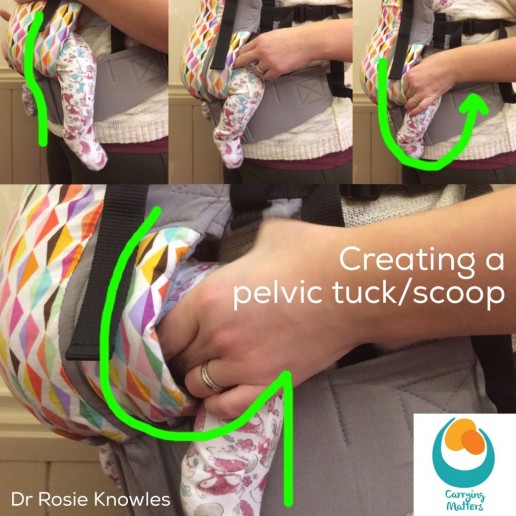What is the pelvic tuck?
The pelvic tuck/tilt is how we create an ‘M position’ for younger babies as they rest on their parent/carer, and also how we ensure low pressure on the kneepits from the edges of a carrier panel. It is a very useful way to ensure a young baby is comfy and safe in the sling.

Their knees are above their bum, with the thighs rotated in the hip sockets. This is how hips are encouraged to develop; babies with dysplastic hip sockets are placed in this position, to promote healing and proper formation of the hip socket. Often, this position is so helpful that mild cases self-correct, and is why the rate of hip dysplasia is very low in carrying cultures.
This manoeuvre has the effect of tilting baby’s pelvis upwards. Hold baby’s thighs in your hands and curl their knees up towards you so their bottom sinks downwards (if they are facing in.) The movement of your hands looks like scooping ice-cream, or pouring two glasses of water away from you. Try it, go on! You should be able to feel a baby’s kneepits are now not bearing weight, and their lower legs can swing freely at the knee.
The pelvic tuck helps to ensure that baby’s lower spine is gently curved and that the chest is brought into close contact with the wearer’s body – the gentle J shape (as opposed to a curled up C shape). This will help to avoid slumping forwards which could compromise airway. It also creates a broader base that helps to support and stabilise the spine of a young baby.
A scarf can be used for narrow based carriers to provide the wider base of support.



The pelvic tuck is less important for older babies and toddlers; as children get older, the ability to actively move around in the sling becomes more important while they are awake.
Read more about the pelvic tuck here https://
and about healthy hips here https://

